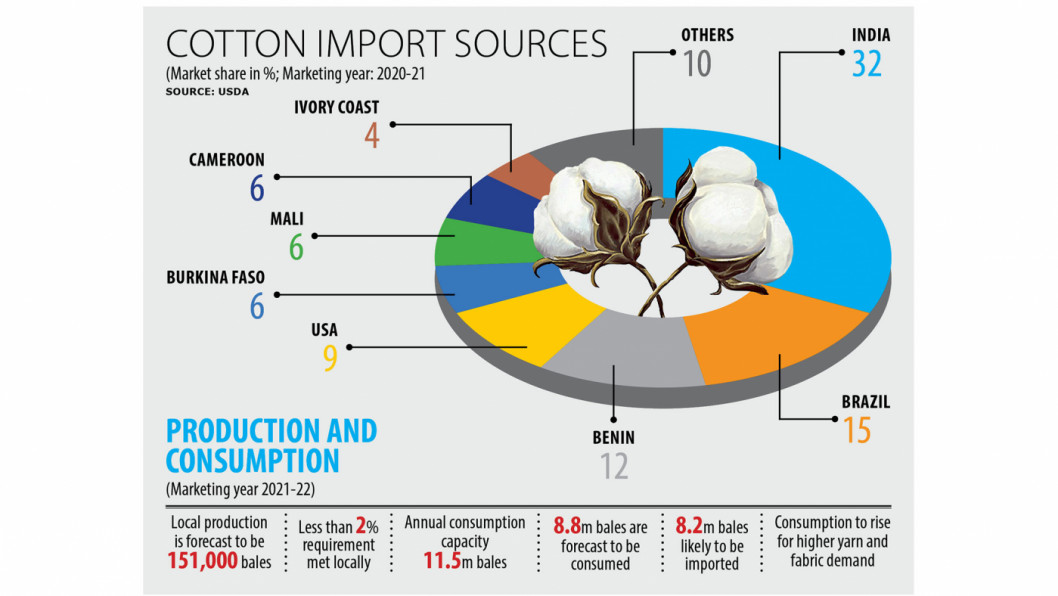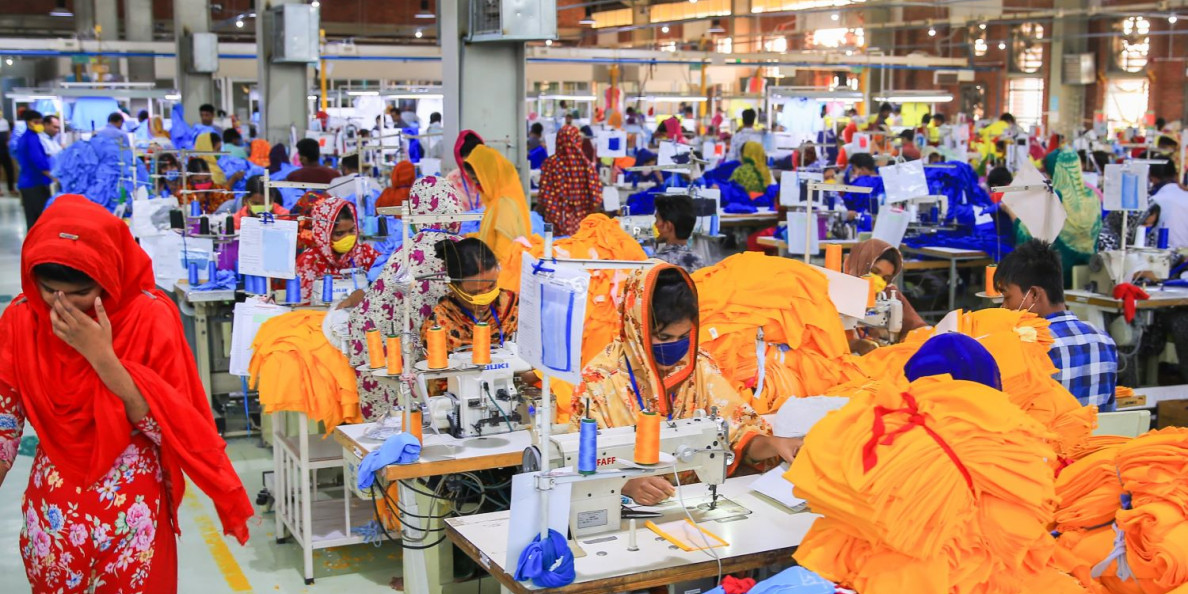Domestic cotton consumption is set to increase in the current marketing year (MY) as many international retailers and brands are shifting their work orders to Bangladesh, according to the United States Department of Agriculture (USDA).
Local mills and spinners will consume 8.81 million bales of cotton in MY2021-22, up 3.52 per cent from 8.51 million bales the year before, as Covid-19 restrictions in apparel sourcing countries such as Vietnam and Indonesia are forcing international buyers to find a new supply for their products.
As such, Bangladesh has been receiving more orders since January 2021, the USDA said in its updated forecast for cotton and cotton product consumption released last week.

The USDA's forecast for the marketing year, which begins on September 1 and ends on August 31, is based on higher yarn and fabric demand from domestic garment factories.
In MY2020-21, domestic cotton consumption in Bangladesh rose 23.3 per cent year-on-year, reflecting Bangladesh's strong position in the cotton apparels market.
However, local entrepreneurs have been investing in manmade fibres to grab a bigger share of the global market for its associated products.
Bangladesh is the world's second largest buyer of cotton after China as the local garment industry is highly import dependent.
Of the country's total garment exports, more than 74 per cent is made from cotton, contrary to the global scenario where 78 per cent of garments are of manmade fibres.
Bangladesh's capacity for cotton spinning is so high that local spinners can supply 95 per cent of the yarn required by the knitting sector and some 40 per cent of the materials required by the woven sector.
In its report, the USDA said annual yarn and fabric consumption in the country is likely to rise to 0.95 million tonnes and 6.3 billion meters respectively in MY2021-22, up from 0.94 million tonnes and 6.2 billion meters respectively the previous year.
The agency also revised upward its forecasts on Bangladesh's cotton imports from 1.2 per cent to 8.2 million bales for the same period.
However, the volume of cotton imports will decline from 8.75 million bales last year as local spinners will continue to use cotton from previous stocks in the face of higher international prices.
For MY2021-22, ending stocks would be 2.4 thousand bales, approximately 4 per cent lower than the USDA's official forecast, the latest report said.
As per the report, India was the preferred source for cotton for local mills. Imports from the neighbouring country took place via Kolkata seaport and Benapole land port.
Traders noted that transportation and other logistics are comparatively cheaper when cotton is imported from the neighbouring nation as shipment times are shorter thanks to geographic proximity, it added.
Indian cotton held a 32 per cent market share in Bangladesh followed by Brazil with 15 per cent, Benin with 12 per cent, and the US with 9 per cent in MY2020-21.
The USDA went on to say that domestic cotton production meets less than 2 per cent of the annual demand from local mills.
Bangladesh currently has 433 yarn mills and 827 fabric mills while there are also 19 synthetic spinning mills and eight acrylic spinning mills in operation.
The country's annual yarn spinning capacity and fabric manufacturing capacity is 3.3 billion kilogrammes and 7.8 billion meters respectively, according to data from the Bangladesh Textile Mills Association (BTMA).
Bangladesh's total raw cotton consumption capacity is 11.5 million bales, however, it is currently consuming approximately 8.5 million bales of raw cotton annually.
The report forecasts yarn production will reach 750 thousand tonnes in MY2021-22, up 2.7 per cent from the year before, as demand is increasing.
In 2020, the Covid-19 pandemic negatively impacted Bangladesh's garment exports to major markets, primarily the US and EU, as many international brands cancelled their orders. This resulted in a 17 per cent decline in shipments for the 2020 calendar year compared to the year before.
But from the second quarter of 2021, Bangladesh's garment factories began to see increased orders from western economies that had recovered from the coronavirus fallout.
Preliminary data from the Bangladesh Export Promotion Bureau shows that garment exports in the first 10 months of 2021 increased 28 per cent to $28.5 billion.
Monsoor Ahmed, chief executive officer of the BTMA, said the USDA's latest report is accurate as the demand for yarn and fabrics has increased a lot and local millers have expanded their capacities.
Cotton consumption is expected to reach nine million bales in 2022 due to the rising demand, he added.
Πηγή: thedailystar.net

